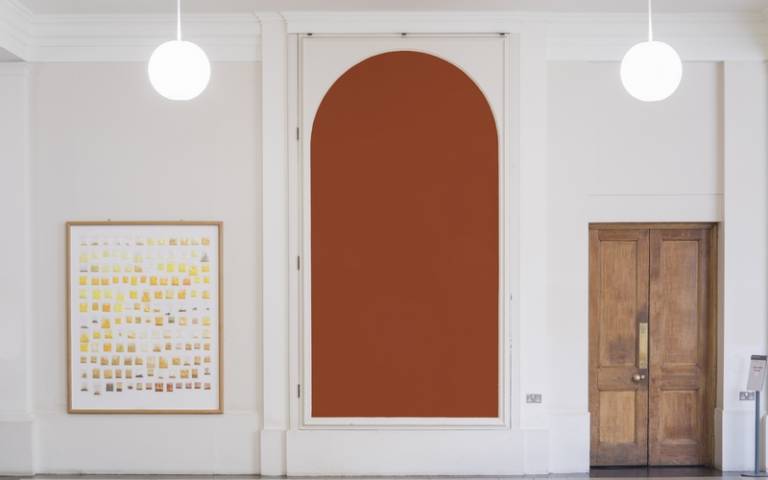Transforming waste from coal mines into paint
An artist from UCL Slade School is reusing waste ochre from coal mines to produce commercial paint, saving it from going to landfill.

7 October 2020
Every year, the UK Coal Authority produces thousands of tonnes of ochre – also known as hydro ferric oxide – as a by-product of its water treatment schemes at coal mines across the UK. Without any economically viable use, the ochre was sent to landfill.
Onya McCausland, Leverhulme Early Career Research Fellow at the UCL Slade School of Fine Art, saw the potential of reusing the waste by transforming it into ochre pigments that recognise their history and are named by their place of formation.
Working with UCL Business, and in partnership with The Coal Authority, Onya has developed the first-ever mineral-based, sustainable exterior grade emulsion paint made from ochre waste and the first artist-grade oil paint using recycled burnt ochre from Six Bells in Blaenau Gwent, South Wales. The paints are due to be launched in autumn 2020. The mine water treatment site at Six Bells will be marked with a plaque highlighting the link between the colour and its formation inside the coal mines.
The project engages with the local community and is establishing a Community Interest Company to recycle benefits back into the local economy.
““We want to positively alter public perceptions of coal mining waste so that it's seen as something with artistic and historic value,” explains Onya.
Onya used the colours created from the ochre waste from five former coal mines for Five Colours, Five Landscapes, an exhibition of wall paintings staged throughout The Cloisters at UCL in April 2018.
 Close
Close


